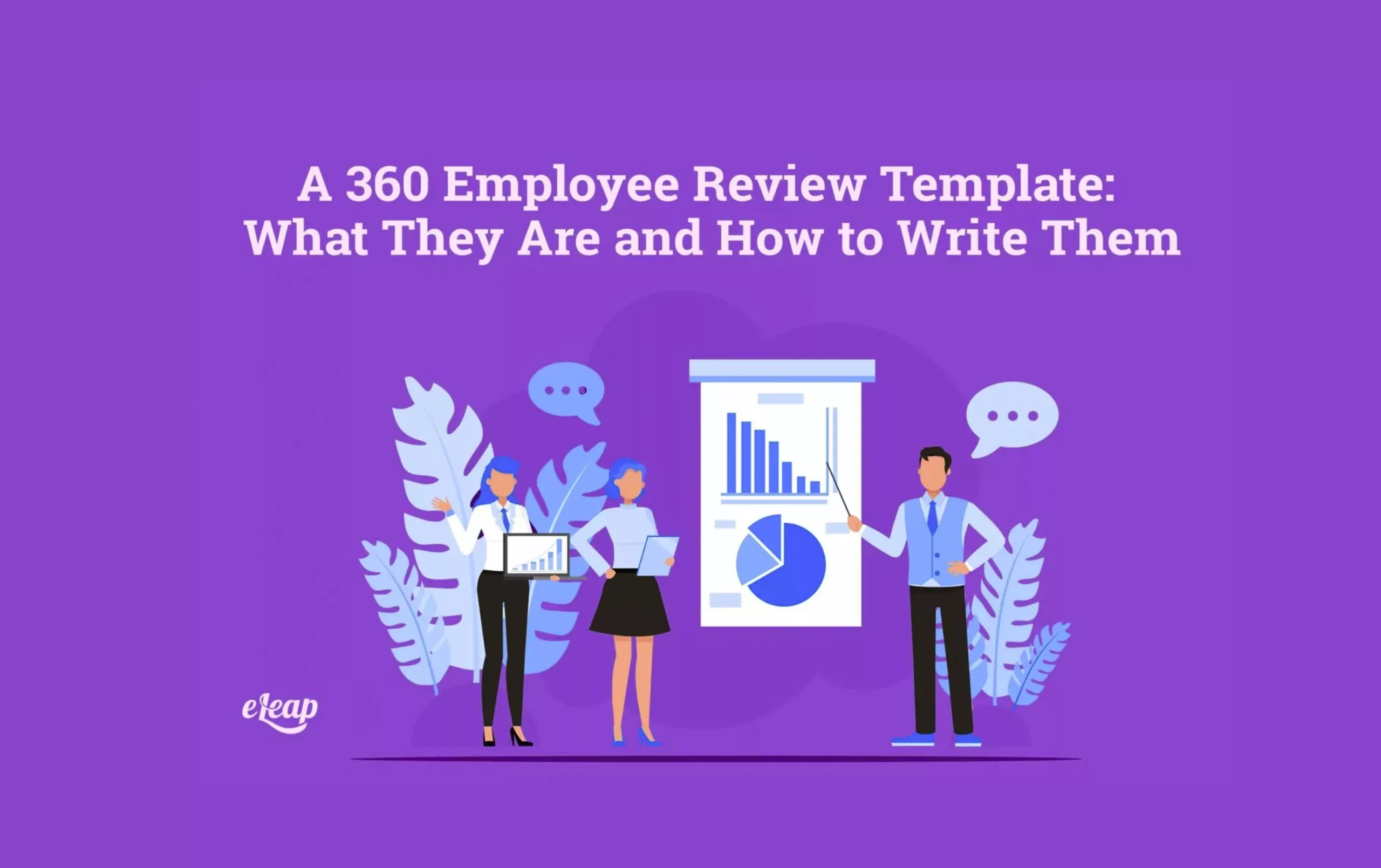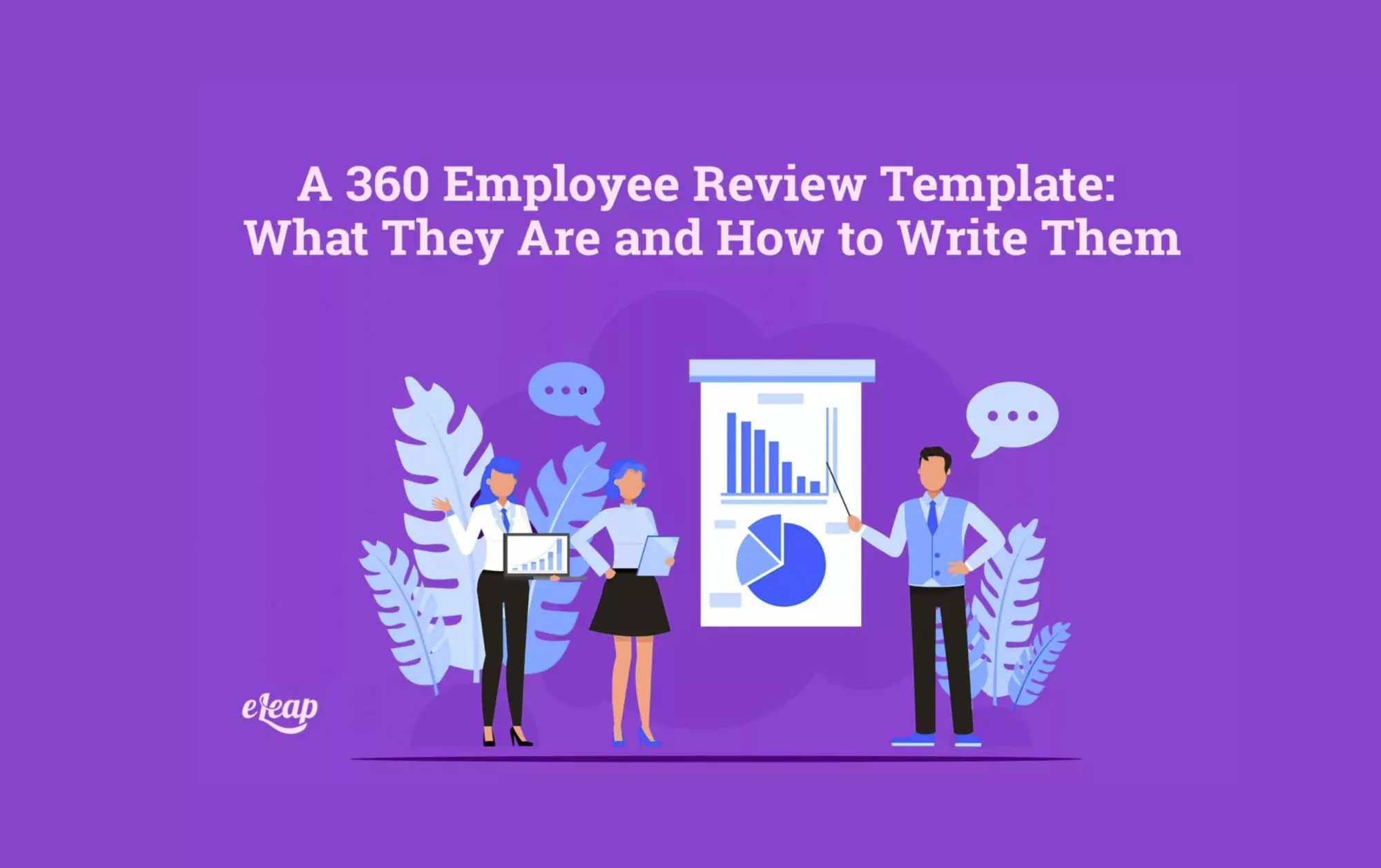A 360 Employee Review Template: What They Are and How to Write Them

An employee review template is a well-known tool used by organizations to assist in regular feedback-gathering exercises such as employee performance reviews. There are many types of reviews used to gauge the performance, success rate, and satisfaction of all levels of employees, from support team members to management personnel. Whether it’s management one-on-ones, peer review sessions, annual performance reviews, or employee feedback surveys, all are meant to gather feedback, highlight strong points, and illuminate areas in need of improvement for both individuals and entire teams.

A 360 employee review is another type of performance review used to promote employee development. Read on for what makes them different than other performance review techniques and you can decide whether a 360 employee review template would be helpful for your organization to keep on hand.
What is a 360 Employee Review?
While standard performance reviews typically involve a manager evaluating a lower employee and peer reviews are coworkers at the same level within a company reviewing each other, 360 employee reviews are different. They are characterized by a single team member receiving feedback from several peer staff members in addition to supervisors and managers with whom they work regularly. If you think “360 degrees,” think about the employee who is being reviewed receiving team member feedback from all angles. A 360 employee review template tends to focus on specific ways in which an employee’s work and contributions affected the work, goals, or accomplishments of the entire team, whether it was positive or negative.
How exactly a 360 employee review is executed depends on the overall interpersonal climate of the teams that make up an organization. If there is a well-established level of trust between all employees, then 360 reviews can typically be conducted without managers having to actively moderate the review itself. The team members can work directly from the 360 employee review template and conduct a successful review.
A 360 review can be based on electronically tracked performance results that give each employee an individual score in each assessment category. Open-ended short answer questions can also be used for gathering 360 review feedback.
However, when the manager is the subject of the review, oftentimes a third party is brought in to oversee the reviewing process. The consultants then analyze the data submitted through the employee review template and present the feedback to the manager and possibly the entire staff.
How to Write Questions to Put on a 360 Employee Review Template
The questions on an employee review template can make or break how helpful the performance review will be for helping both managers and team members benefit from the process. All questions must be:
Relevant to the person who is the subject of the review.
The employee review template shouldn’t include questions about the performance of maintenance duties if the person being reviewed is working in a sales position. Those are two entirely different departments and the maintenance questions would not apply to the sales representative.
Focused on employee behavior as well as performance.
While performance is important, employee behavior also has a great influence on the rest of the team in terms of motivation, morale, and the overall workplace dynamic. It’s important to include some questions that can’t be measured by any key performance indicators and instead focus on personal traits such as interpersonal skills and communication.
Written to help the person gain insight on their oversights.
If an employee is known to have certain blind spots in their performance, management can try to write review questions that could help bring some of these issues to light. This can be accomplished without using language that is too direct to the issue or could be seen as attacking or leading. The questions should still use unbiased language.
Relevant to the organization.
Are the questions seeking to get the kind of feedback that would be helpful to the organization and company-wide goals? If not, they might not belong on the employee review template.
As a general rule, it’s also important to keep the total question amount to under 30-40 different questions. Otherwise, the person completing the review could easily burn out and start giving answers that don’t reflect their true thoughts just to get through the survey.
Example Questions for a 360 Employee Review Template
A 360 employee review can utilize different types of questions to uncover the information a management team is looking for. The main two types of questions are closed-ended and open-ended feedback questions. Closed-ended questions will usually have specific answer options such as a rating scale or yes/no answers. Open-ended questions allow the respondent to offer short answers in their own words to better elaborate on the topic. Questions can pertain to several different categories:
Leadership
Here are some examples of closed-ended questions that would help to analyze an employee’s leadership skills:
- Does this employee regularly exhibit leadership?
- Does the employee assume responsibility for the tasks at hand and see them through to completion?
- Do other team members look up to this employee and frequently approach them with questions?
- Does this employee carry out all of their expected job duties with no issue?
- Does this employee contribute to problem-solving by offering input?
- Does this employee manage a team effectively?
Communication
To analyze the communication skills of an employee, you could include closed-ended questions such as these:
- Does the employee demonstrate good active listening skills?
- Does this employee efficiently communicate with all levels of the organization from customers to peers to supervisors?
- Does this employee demonstrate good written communication skills with accuracy in grammar and spelling?
- Does this employee communicate well verbally?
- Does this employee relay their ideas to other members of the team?
- Does this employee make space for open discussion to which other team members can contribute?
Interpersonal Skills
Some questions can pertain to how well the employee works with others on the team. The following are a few closed-ended examples:
- Does this employee work well with others by being respectful to team members?
- Is this employee good at managing their emotions in difficult situations?
- Does this employee seem to be the source of frequent conflicts with other team members?
- Does this employee behave in a way that is in alignment with the company’s core values?
- Does this employee openly share ideas with others and are they accepting of the input of other team members?
- Do other staff members frequently turn to this employee for advice on even non-work-related topics?
Employee Motivation
Motivation can play a big part in an employee’s productivity. These are a few examples of closed-ended questions that can help shed light on this aspect of employee performance:
- Does this employee approach their work tasks with vigor and enthusiasm?
- Does this employee, verbally or otherwise, indicate that they are indeed motivated to perform their job duties?
- Does this employee require motivation from others to get started on a task?
- Does this employee’s work ethic motivate others to work hard on group projects?
Closed-ended questions can also pertain to topics such as problem-solving, organizational alignment, and even efficiency, but where do open-ended questions come in on an employee review template? Many organizations may use them to further clarify each closed-ended question by prompting the reviewer to elaborate on their answer rating or explain why they answered a question the way they did. Open-ended questions can also be added after all of the closed-ended and be aimed at gathering a few more details about the employee. Some prompts could include:
- What else might you like to mention about your coworker?
- Is there anything this employee has done exceptionally well?
- What types of improvements could this employee make that would improve their effectiveness?
- Are there any additional comments that should be mentioned about this employee?
Open-ended questions are quite effective for getting more specific details about the review subject as opposed to yes or no answers or a number rating. The elaboration contained in the answers can help to pinpoint any issues and identify solutions.
Who Can Participate in a 360 Employee Review?
Just as the employee review template questions should be relevant to the employee and their position, the coworkers participating in the review should also be relevant to the employee who is the subject of the review. This includes peers, managers, and subordinates who have spent enough time working with the review subject within the designated timeframe of the review, and who have enough experience working with them to be able to thoroughly complete the review by contributing helpful answers.
360 Employee Reviews Offer Great Feedback to the Employee
Few performance review styles are so thorough as the 360 employee review. They are a way for an employee to get performance feedback from all levels of coworkers, from subordinates to same-level colleagues to team leaders and bosses. What better way to get a full scope of feedback on multiple aspects of one’s job performance and how it affects the entirety of the team? If your organization doesn’t currently have a 360 employee review template in its toolkit, it could be a helpful and worthy addition to the organization’s performance review techniques.